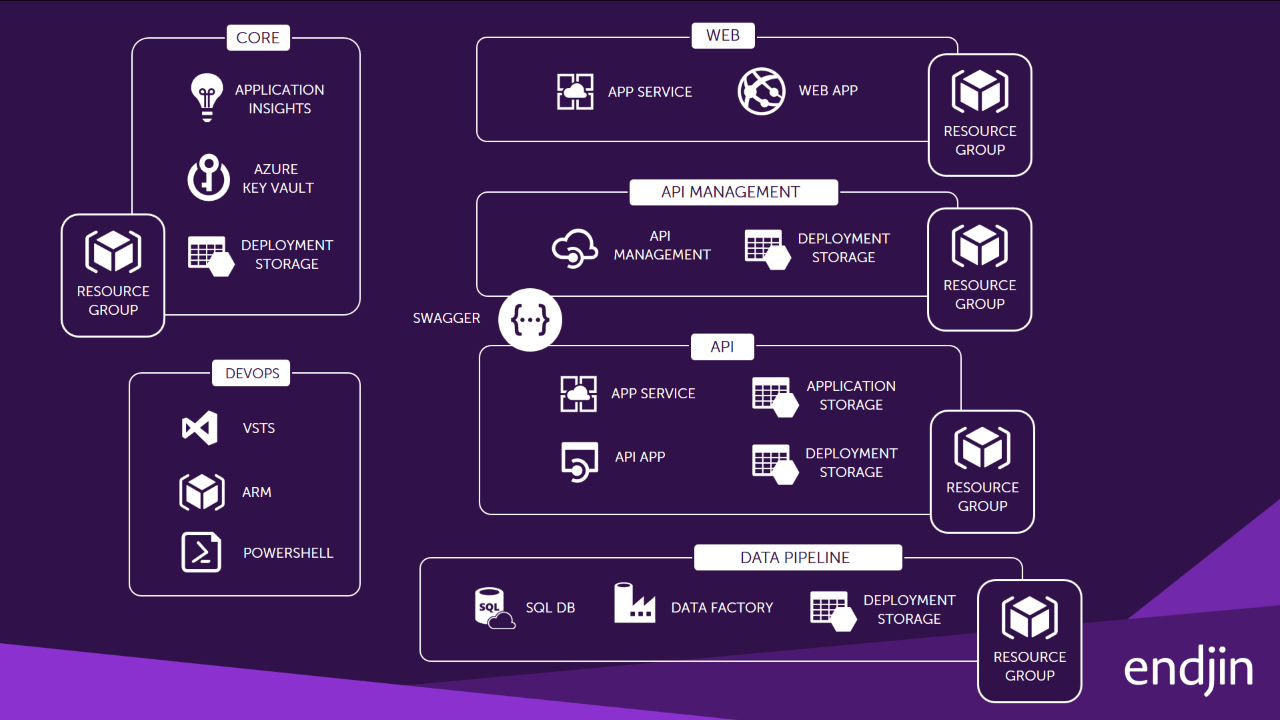The Challenge
abrdn saw the strategic need to deliver their services to partners and customers through public APIs.
They selected endjin's best-of-breed Azure reference architecture, security framework, and blueprints to kick-start their API Delivery programme.
Powered by DevOps processes and automation, abrdn had a frictionless path to production for rapid delivery.
Requirements
- Developing a centralized API service layer over disparate internal systems, for both internal and external consumption
- Using a best-in-class cloud architecture without managing infrastructure
- Meeting tight overall deadlines whilst delivering incremental value in rapid iterations
- Maintaining high quality with outsourced development team
- Defining and implementing cross-cutting and non-functional requirements such as security policies, and operational monitoring
We used the solution endjin provided to accelerate our early Core Services Platform development sprints. By providing us with a blueprint, the team was able to accomplish Sprint Zero without any impediments and have gone on to build on these foundations.
An Overview
Developing a centralized service layer over an array of disparate and heterogeneous systems was key to modernizing abrdn's business and allowing bimodal IT.
But critical to its success was doing it the right way – building a best-in-class cloud architecture that could scale and support the new workloads that it would enable, and building out a new DevOps capability in the team that ultimately be responsible for its rapid development.
With help from endjin in the form of a production quality, proof-of-concept, API Platform reference architecture, abrdn eliminated the need for lengthy R&D and could hit the ground running on day one. By applying DevOps best practices to process and automation, endjin left abrdn with a frictionless path from feature development to production, allowing the team to deliver rapidly whilst ensuring the required quality at every step of the way.
Solution Architecture
Endjin's API Economy Platform Blueprint can be configured to deploy specific API platform infrastructure according to the underlying workloads supporting the APIs – including .NET operations, R models, or services requiring complex data movement and processing activities.
In each case, Azure API Management provides the means to create and publish APIs, enforce their usage policies, control access, support the subscriber community, collect and analyze usage statistics, and report on performance.

The Benefits
Since engaging with endjin, abrdn have gone on to build on the foundations of the API Economy Platform Blueprint, delivering business value on top of a solid architectural base, without lengthy set up or up-front design work. The patterns and templates provided in the blueprint mean that abrdn have clear guidance and examples for implementing specific workload scenarios so they can integrate new features rapidly and consistently.
We recently completed a Microsoft Solution Assessment and line-by-line code review. The solution and code were rated high-quality and well-constructed.
The DevOps processes that were recommended and configured inside Azure DevOps have meant that abrdn had Continuous Integration and Continuous Delivery pipelines on day one – automatically deploying the entire solution infrastructure into first class Azure PaaS services. Not only has this enabled agility and increased efficiency in the development team, but by configuring the necessary quality gates at every step of the way, it has added a safety net around the entire ALM process, so changes will only be promoted once the required approvals and confirmations have been applied. With Application Insights providing centralized operational monitoring in the Cloud, the team is truly DevOps enabled.
Finally, thorough documentation, in the form of walkthrough and demo videos on the solution template and DevOps processes, has meant that the development team have been able to shortcut the training process, acquiring the necessary skills quickly through contextualized and relevant content. The training collateral has been used to onboard new team members into the project, allowing them to get up to speed on the technical decision making process and developer workflow quickly so that they can deliver within the aggressive deadlines that the business demands.
